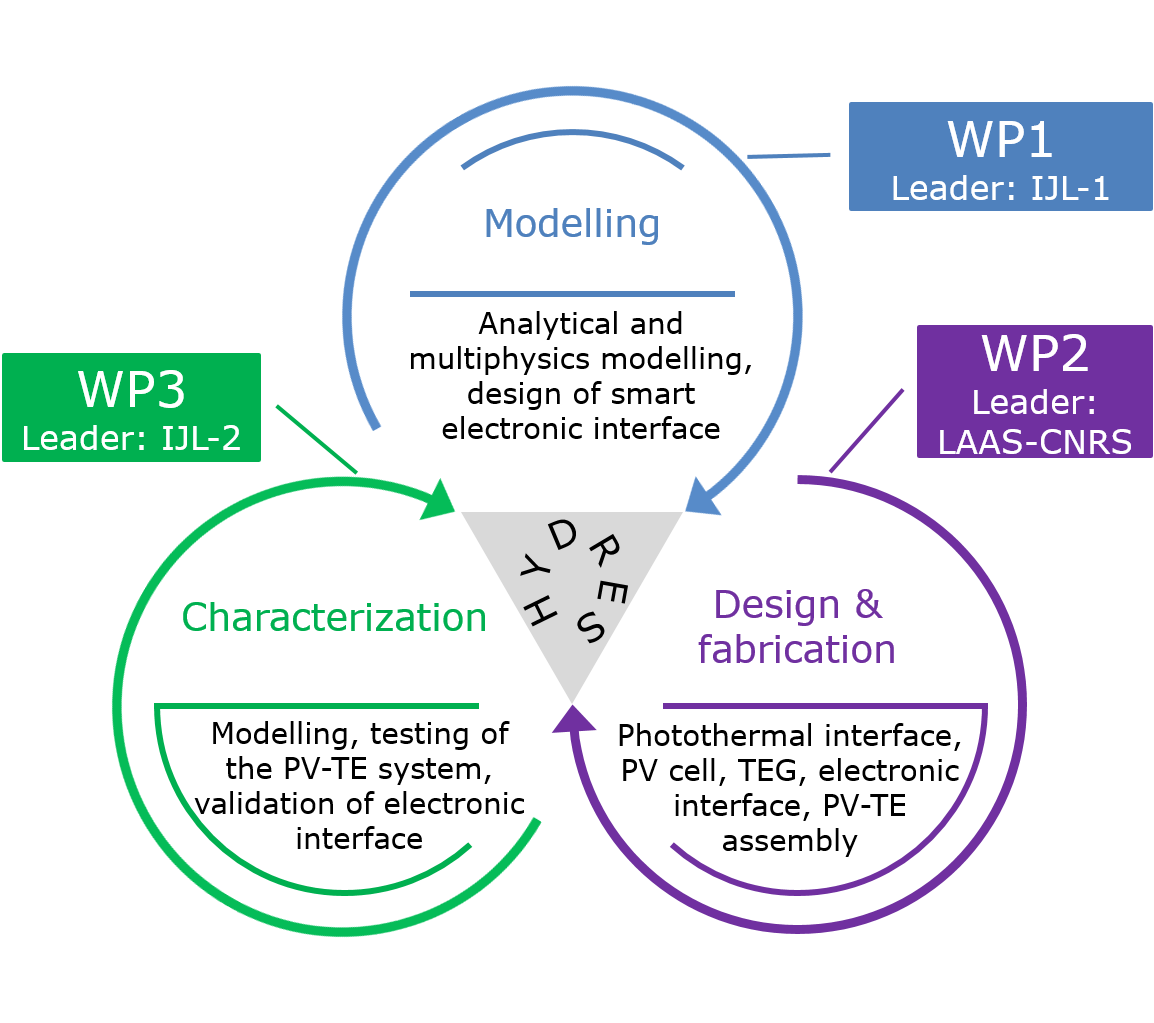Consortium
The proposed consortium brings together three partners: the Photonics team at LAAS-CNRS and two teams at Institut Jean Lamour, the “Materials with Thermoelectric Properties” (MTP) (IJL-1) and “Electronic Measures and Architectures” (EMA) (IJL-2) teams.

Methodology of the project HYDRES
LAAS-CNRS (Laboratory for Analysis and Architecture of Systems), located in Toulouse, is a large research unit of the CNRS (UPR 8001) and one of the key actors in micro/nano-technologies in France and in Europe. The research activities of the Photonics team are focused on the design and realization of innovative optical devices integrating complex photonic structures, from lasers integrating photonic crystals to devices for nonlinear optics. The group has developed an expertise spanning from the numerical design of functional photonic structures to the technological realization of working devices including III-V semiconductor growth. In particular, HYDRES benefits from the Photonics' team know-how on the fabrication of III-V based PV cells and the design and fabrication of thermoplasmonic structures. Technological developments are supported by the LAAS’s micro and nano technologies cleanroom (1500 m2), which belongs to the French RENATECH network. LAAS-CNRS handles the modelling, fabrication and characterization tasks related to the photovoltaic cells and to the photothermal interface.
The Institut Jean Lamour (IJL) is a research laboratory associated to the Université de Lorraine and the French National Centre for Scientific Research (CNRS: UMR 7198). IJL is a major laboratory in the fields of materials, metallurgy, nanoscience, plasma, and electronics.
IJL-1 has a long-standing experience on bulk TE materials and on their integration into TE devices, going from their synthesis and transport properties measurements to contact engineering and device assembly. IJL-1 brings its expertise in the development of high-power-density and conversion-efficiency thermoelectric modules and in their full optimization using FEM. IJL-1 handles the multiphysics FEM, the synthesis and characterization of the TE materials and the design, assembly and characterization of the TEG modules and assembly of the hybrid PV-TE devices.
IJL-2 has a strong experience on electronic design, implementation and characterization. Electronic interface for energy harvesting is one of the rising activities of the group, which include also instrumentation and measurement, electrical modelling of heterogeneous systems, rapid prototyping and HIL simulation. T will be exploited. IJL-2 handles the electrical modelling of the PV-TE system, the design of the smart electronic interface and the characterization of the PV-TE system.
